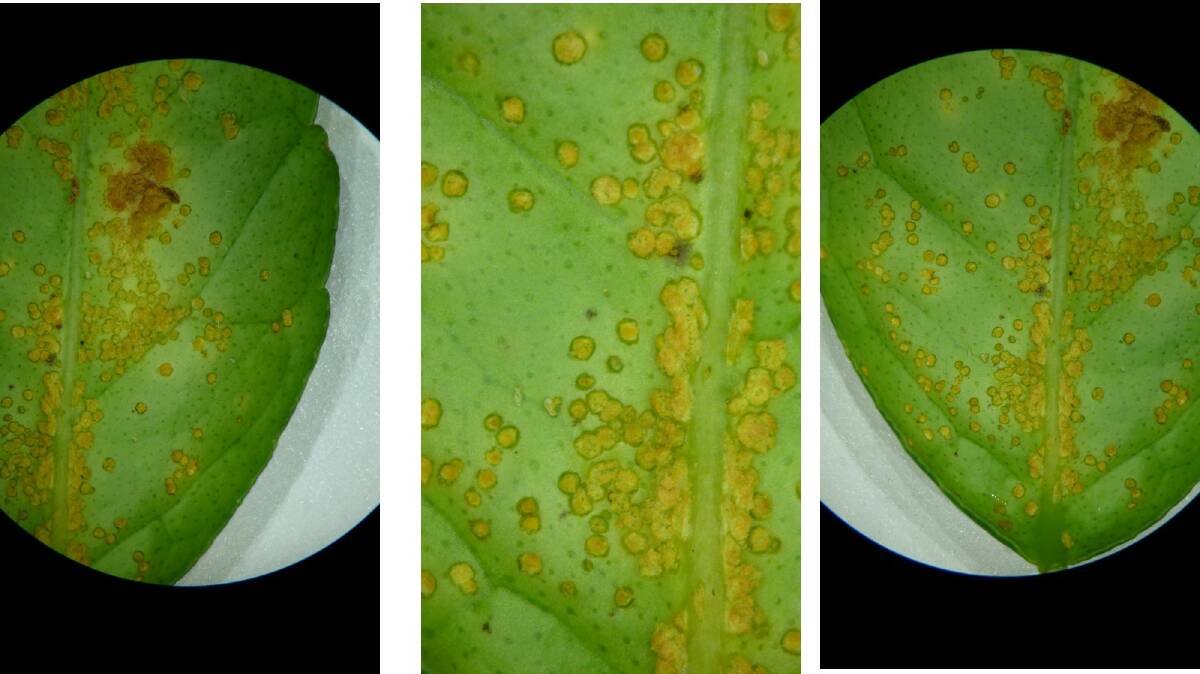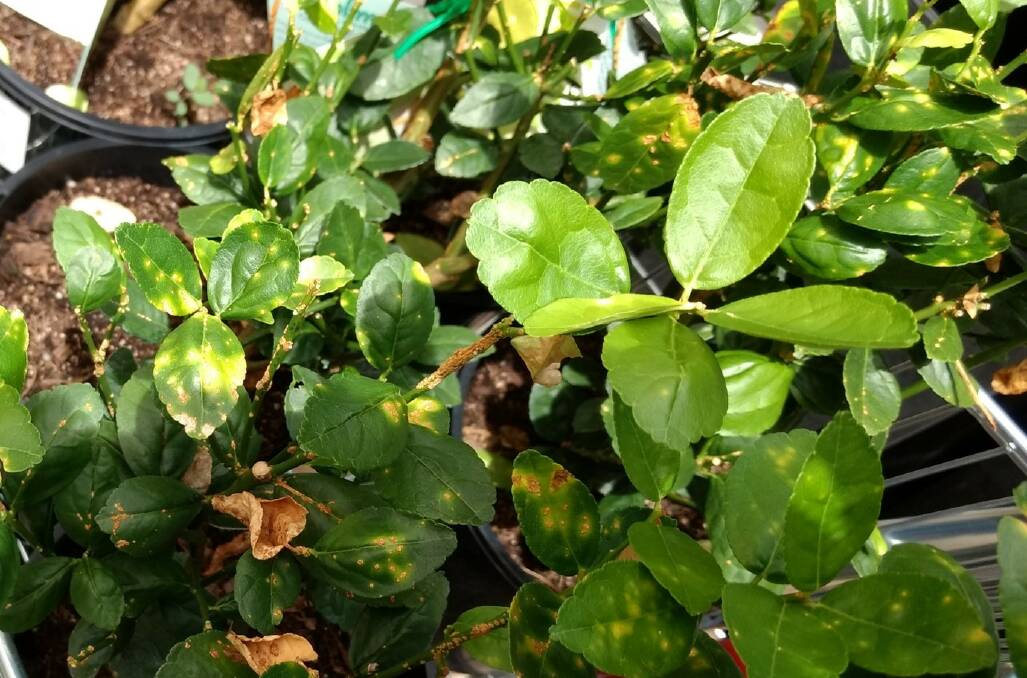
ONE of Australia’s largest citrus growers has called for the immediate destruction of all citrus trees in Katherine and the NT.
Subscribe now for unlimited access.
or signup to continue reading
The call comes after the dreaded disease was confirmed to be present in Katherine, NT last week, and also in plants on three properties in Western Australia including two retail businesses in Kununurra and one property at Wyndham, WA.
Chief operating officer of citrus operation 2PH, Craig Pressler, has called for a major cull of infected and potentially infected trees from the NT.

“It is essential that the NT be neutralised now," Mr Pressler said.
His business suffered an outbreak on the Qld property at Emerald in 2004. It resulted in all citrus trees within a 50km radius being destroyed as a precautionary measure.
“Since that time, little has happened in terms of contingency plans across the industry,” Mr Pressler said.
“A draft contingency plan is still just that, a draft, 14 years after the last outbreak.
“Seed and budwood stock can be imported into Australia legally. However, plant material has been introduced illegally but there have been no prosecutions.”
According to Mr Pressler, Australia is the only country in the world in which there are no regulations on nurseries producing citrus.
“We all suspect that budwood has been illegally imported here,” he said.
The NT Department of Primary Industries' website says its scientists and experts are "investigating all options to try and identify the origin".
What's canker?
CITRUS canker is a contagious disease of citrus (and some other plant species of the citrus family, Rutaceae) caused by the bacteria Xanthomonas citri subsp. citri.
Infected trees display unsightly lesions which can form on leaves, fruit and stems.
The WA Department of Primary Industries and Regional Development this week introduced additional restrictions to stop the spread of citrus canker in the East Kimberley.

The new measures apply to the movement of a range of citrus canker host plants and parts of these plants, including fruit.
Citrus trees and parts of these trees, including fruit, cannot be moved into, out of or within the Restricted Areas.
Propagation and planting of these plants is also prohibited in the Restricted Areas.
RELATED READING
Broader Control Areas, covering a 50km radius around both Kununurra and Wyndham, remain in place preventing movement of citrus plants and fruit from these areas.
Department acting chief plant biosecurity officer, Sonya Broughton, said strict quarantine measures were required to prevent the disease spreading.
“Citrus canker has been eradicated previously in Australia using similar movement restrictions and surveillance, and we are working closely with industry and the community to control and eradicate this disease,” Dr Broughton said.
“We ask people who live or work in the Restricted Areas to cooperate with response staff undertaking visits as part of the surveillance and eradication efforts."
Little from CA
CITRUS Australia's only statement on the NT detection so far was in April, with chief executive officer, Nathan Hancock saying citrus canker had previously been found in Australia and was successfully eradicated.
“We hope that this early detection and related activity to contain the disease through controlled movement of citrus plant material will give us the best chance of eradicating the disease," he said at the time.
But Mr Pressler called for owner reimbursement and compensation paid in order to save the 28,000ha of trees in the rest of the country and the $750 million industry.
He also pushed for urgent action with cyclone season only months away.
In 2004, the disease was eradicated from Emerald and after two years, orchards were replanted but the economic cost to some individual growers was in the tens of millions of dollars.
By a decision being delayed, it means the risk of greater infection is increased.
- Craig Pressler, 2PH
Mr Pressler also took a swipe at the biosecurity processes involved in this latest outbreak.
He said it had already taken plant health authorities four weeks to confirm the NT outbreak; twice as long as in 2004.
“The cookie-cutter zone control (600-metre radius) is totally inadequate. The only solution for the future of the industry in Australia is to remove all trees in the whole affected area and to do it now," Mr Pressler said.
"By a decision being delayed, it means the risk of greater infection is increased.
“The biggest farm in the NT is 20,000 trees; there are perhaps 100,000 in the whole of the territory. We have more than twice that on this one property alone in Emerald.
“If citrus canker becomes endemic in Australia, that is, part of the natural order, we will lose our overseas markets.
"Many countries will not import fruit from places where canker is established.”
Those who suspect they have a plant with citrus canker are urged to contact the NT DPI by calling the citrus canker hotline on 1800 931 722 (open 24/7), e-mailing: citruscanker@nt.gov.au or submitting a report online.
Also, the NT Government announced today another infected plant site has been detected in the Marrakai area.
An additional Restricted Area, including movement restrictions for citrus and host plant varieties and their associated material in the area around the detection, has been put in place.
This new Restricted Area, as well as the new Restricted and Control Areas in Katherine following the detection earlier in June, have been gazetted and are available on the department’s citrus canker web page at www.dpir.nt.gov.au/citrus-canker.
The Marrakai Restricted Area is within the already established greater Darwin Control Area that was gazetted on 21 May 2018.
Northern Territory Director for Biosecurity and Animal Welfare Sarah Corcoran said the infected plant was one of three potted citrus plants. “The infected plant was found on a property in Marrakai that is more than two kilometres from the nearest commercial citrus premises,” Ms Corcoran said.


